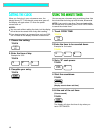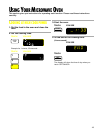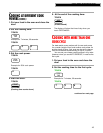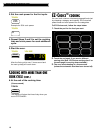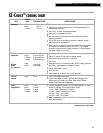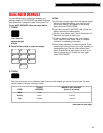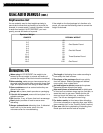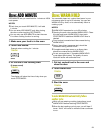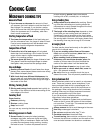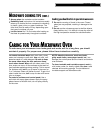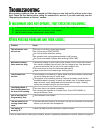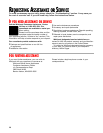
23
COOKING GUIDE
•
Always place the container on the turntable.
•
Reheating food in aluminum foil containers usually
takes up to double the time compared to reheating
in plastic, glass, china, or paper containers. The
time when food is ready will vary depending upon
the type of container you use.
•
Let food stand for 2 to 3 minutes after heating so
that heat is spread evenly throughout container.
Cooking you should not do in your microwave oven
•
Do not do canning of foods in the oven. Closed
glass jars may explode, resulting in damage to the
oven.
•
Do not use the microwave oven to sterilize objects
(baby bottles, etc.). It is difficult to keep the oven at
the high temperature needed for safe sterilization.
MICROWAVE COOKING TIPS (CONT.)
For interior surfaces: Wash often with warm, sudsy
water and a sponge or soft cloth. Use only mild, non-
abrasive soaps or a mild detergent. Be sure to keep
the areas clean where the door and oven frame
touch when closed. Wipe well with clean water. Over
time, stains can occur on the surfaces as the result of
food particles spattering during cooking. This is normal.
For stubborn soil, boil a cup of water in the oven for
2 or 3 minutes. Steam will soften the soil. To get rid of
odors inside the oven, boil a cup of water with lemon
juice or vinegar.
For exterior surfaces and control panel: Use a
soft cloth with spray glass cleaner. Apply the spray
glass cleaner to the soft cloth; do not spray directly
on the oven.
CARING FOR YOUR MICROWAVE OVEN
To make sure your microwave oven looks good and works well for a long time, you should
maintain it properly. For proper care, please follow these instructions carefully.
NOTE: Abrasive cleansers, steel-wool pads,
gritty wash cloths, some paper towels, etc., can
damage the control panel and the interior and exterior
oven surfaces.
To clean turntable and turntable support, wash in
mild, sudsy water; for heavily soiled areas use a mild
cleanser and scouring sponge. The turntable and
turntable support are dishwasher-safe.



